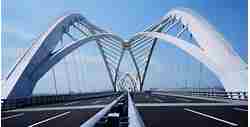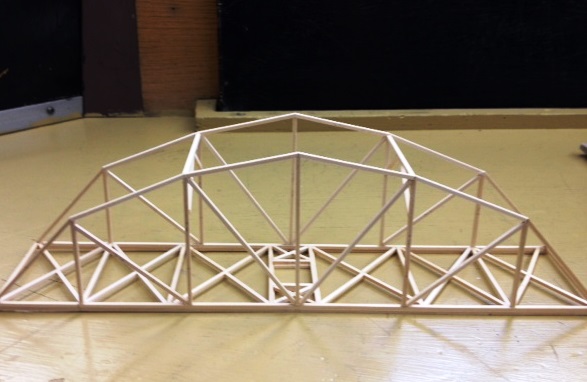Courses by Software
Courses by Semester
Courses by Domain
Tool-focused Courses
Machine learning
POPULAR COURSES
Success Stories
Week 8 - Challenge 3 - Coin Holder Design
AIM: Create the Coin Holder Plastic component through the given Class-A surface. To begin with, the tooling axis for the given Class-A Surface should be created meeting the requirements of the draft angle and at the end perform the Draft analysis on the model. Take the Thickness of the component to be 2.5…
Naresh Kumar
updated on 14 Nov 2022
AIM:
Create the Coin Holder Plastic component through the given Class-A surface. To begin with, the tooling axis for the given Class-A Surface should be created meeting the requirements of the draft angle and at the end perform the Draft analysis on the model. Take the Thickness of the component to be 2.5 mm
MATERIAL SELECTION:
- ABS(Acrylonitrile Butadiene Styrene)
- High rigidity.
- Good impact resistance, even at low temperatures.
- Good insulating properties.
- Good weldability.
- Good abrasion and strain resistance.
- High dimensional stability (Mechanically strong and stable over time)
- High surface brightness and excellent surface aspect.
OBJECTIVE: Developing the coin holder plastic model design from the give input class A surface by ceating class B and class C surface.
CLASS A SURFACE: This is the given class A surface which is used to create the class B and C surfaces.

In this given surface first I need to check any open boundaries that may create errors while designing.
After checking I need to create a Tooling Axis for the Class - 'A' surface.
Then I need to create the Class - 'B' and Class- 'C' surface with the help of the Class - 'A' surface
TOOLING AXIS: Tooling axis created in y-axis
Tooling axis is the movement direction of the mould and cavity, so it is very important to creat the tooling axis for the plastic product model while design, to analys the draft angle effect for the product. For this model the tooling axis is created by suing normal to surface method. There are different type to creat tooling axis which is mention below:-

First we have to analys the model and find the suitable surface where the tooling axis can creat.Then next extract the surface and by using normal to surface option in line creation tool, creat the tooling axis for the model.
Once the tooling axis is created we need to do draft analysis for the given class A surafce.
DRAFT ANALYSIS: It is very important to give draft angle to the plastic product to avoid damage or defective product output from the mould. The draft angle using in industries are 3 degree.
Drag the compus to the tooling axisand kept in center and then click on the compus icon on draft analysis dialogue box, the compus will get active. Once the compus will active again need to aligned along with tooling axis.
Once the compus aligned with tooling axis, click on the model to do the draft analysis, the model is convert into green color then its indicate model is perfect for modeling and if it is showing red in color then click on the draft analysis dialogue box in reverse icon and the model will get turn into green color, after click on reverse icon still the model is in red color the , don't proceed further , and revert back to class A surface engineer.
The below picture showing the draft analysis for the coin holder:-
class a surface of draft analysis :

Draft analysis for final close surfce-

CLASS B SURFACE: Once the draft analysis is over for the class A surface , next step is to creat B surface.Analysis the class A surface if the surface is less the proceed with multiple offset, if the class A surface is more surface which is difficult to offest one by one then we have to go for one time offet option.
For this model the number of surface is less , so multiple offset is use for offsetting for surface at given distance or if the distance is not given then we can assume 2.5mm or 3mm.

CLASS C SURFACE: The class C surface helps to connect the class A surface and B surface. The C surface is created with the reference of class A surface and tooling axis. When the class C surface is created we have to give the proper angle, if the draft angle is not given then it will creat problem while moulding the product.
First we have to take the boundary for the class A surface edges and by suing swept commond , the C surface will developed. While developing C surafce we have to give proper draft angle to the surface.
Once th C surface is created then need to check the proper intersection of C surface and B surface. By joining and trimming common we have to join the C surface with the class A surface and after join need to trimmed the C surface from B surface, so at the ned we will get final close surface. Once the close surface will creat do the draft analysis for the close surface.

FINAL SOLID BODY: This ia the final stage of the plastic product model,where the final close surface will converted into a solid body.Once the final close surface is created we have to shift to part workbench from surface workbench. In part workbench by using close surface commond the close surface will converted in to solid body.
Once the solid body will created again do the draft analysis for the solid body.
Procedure for creating Closed Body
- Join the Class A and Class C surfaces.
- Trim those joined surfaces with Class B surfaces.
- Go to Part Design and insert a Body.
- Create a closed surface.

part boady of closed surface :

TOTAL SURFACE VIEW OF COIN HOLDER
- TOP VIEW
- SIDE VIEW
- FRONT VIEW

FAMILY TREE OF COIN HOLDER:

Leave a comment
Thanks for choosing to leave a comment. Please keep in mind that all the comments are moderated as per our comment policy, and your email will not be published for privacy reasons. Please leave a personal & meaningful conversation.
Other comments...
Be the first to add a comment
Read more Projects by Naresh Kumar (29)
Week 4 Challenge
Operation to do: Joining of Class A surface. Create Tooling Axis. Create Draft Analysis for Class A Surface. Create Class B Surface. Create Class C Surface. Create Final Product. Material used in Lens: Poly Carbonate. Followed Constrains: The change in dimension of the Class A Surafce is not allowed. Change in thickness…
29 Mar 2023 06:21 AM IST
Week 3 Challenge
Operation to do: Joining of Class A surface. Create Tooling Axis. Create Draft Analysis for Class A Surface. Create Class B Surface. Create Class C Surface. Create Final Product. Material used in Lens: Poly Carbonate. Followed Constrains: The change in dimension of the Class A Surafce is not allowed. Change in thickness…
29 Mar 2023 06:03 AM IST
Project 2
Objective: Route the Wiring harness on Given car body and Prepare flatten view drawing in CATIA V5. Application of all Packaging rules, Industry best practices studied in this course shall be demonstrated in design. Apply Protection coverings as required. Back Door Assembly Part: Construction of the Harness Assembly Bundle:…
28 Feb 2023 06:34 AM IST
Project 1
AIM: To route the wiring harness on given Engine and flatten view drawing in CATIA V5. Route the Wiring harness on Given Engine and Prepare flatten view drawing in CATIA V5. Application of all Packaging rules, Industry best practices studied in this course shall be demonstrated in design. Apply Protection coverings as…
21 Feb 2023 10:11 AM IST
Related Courses






0 Hours of Content

Skill-Lync offers industry relevant advanced engineering courses for engineering students by partnering with industry experts.
Our Company
4th Floor, BLOCK-B, Velachery - Tambaram Main Rd, Ram Nagar South, Madipakkam, Chennai, Tamil Nadu 600042.
Top Individual Courses
Top PG Programs
Skill-Lync Plus
Trending Blogs
© 2025 Skill-Lync Inc. All Rights Reserved.








